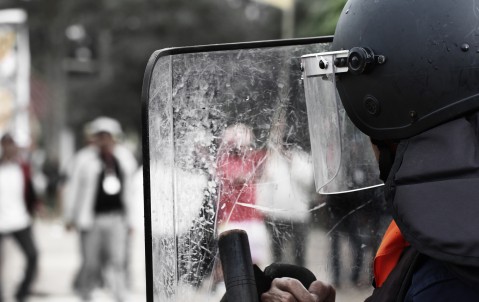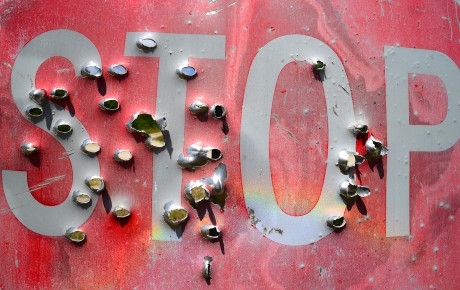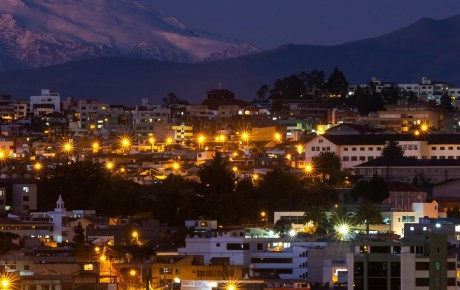
Businesses look for riot shields
From Port-au-Prince to Paris, the risk of public disorder can threaten any business, anywhere.
The fuel riots in Haiti in 2018 and the gilets jaunes (yellow vests) populist protests that continue to rumble on in France are two very different disturbances, but they both reveal the growing risk of civil disobedience and disorder that can erupt anywhere in the world.
Classed by the insurance industry under the collective risk of strikes, riots, and civil commotions (SRCC), it’s a problem that, according to Richard Halstead, Hiscox London Market’s War, Terrorism, and Political Violence Line Underwriter, is often the prime cause of some of the biggest losses seen in the terrorism and political violence market. “Covers like active shooter and malicious attack – the new trends in terrorism – get a lot of publicity but the older SRCC trends, where you see large scale social upheaval, can be just as, if not more, damaging.”
Brazil flops, Haitians riot
When Haiti’s government took advantage of Brazil’s World Cup quarter-final clash with Belgium last year to bury the announcement that it was ending fuel subsidies, they hadn’t factored in what would happen if the result went against Brazil – most Haitians’ favourite national team. But Brazil lost, and the expected feelgood factor failed to materialise. Instead, anger ignited by the rising fuel costs, quickly spilt out on to the streets resulting in widespread looting, burning, civil disobedience and several deaths.
Covers like active shooter and malicious attack get a lot of publicity but the older SRCC trends, where you see large scale social upheaval, can be just as, if not more, damaging.
For many businesses in Haiti, the impact was devastating. “Eight of the 20 businesses that we insured in Haiti, mostly in retail, were affected by the riots,” says Napoleon Montes-Amaya, Head of Hiscox MGA Miami. “Our largest loss was a bottled drinks manufacturer that suffered a warehouse fire caused by rioters.”
Even though Haiti had been relatively stable for several decades the threat of disturbances can quickly escalate, says Montes-Amaya. “Haiti’s 2010 earthquake laid the groundwork for 2018’s civil disobedience. It caused widespread devastation, leaving high numbers of people without basic needs, including employment, and angered by the spiralling levels of corruption.” It means that insurers can never become too complacent, particularly in developing countries, he adds.
A toxic brew
Often it’s this toxic brew of poverty, high levels of corruption, and poor governance that erupts into violence and insurrection, says Halstead. Thailand’s ‘red shirt’ protests in 2010, for example, fed off the country’s political instability, and saw protesters cause huge damage to parts of Bangkok. But, as France’s 2018 and 2019 gilets jaunes riots have shown, civil commotions can flare in countries where many of those factors seen in Haiti or Thailand are not so evident.
Often it’s this toxic brew of poverty, high levels of corruption, and poor governance that erupts into violence and insurrection.
The gilets jaunes movement has caused months of public protest with demonstrations paralysing the French capital, forcing President Macron to offer policy concessions such as a monthly bonus of €100 for those on minimum wage and even rowing back on some of his mooted tax changes. Despite these attempts to placate the yellow vests, the French economy has already been hit hard with the French Finance Minister Bruno Le Maire reportedly saying in December 2018 that the crisis was a “catastrophe for business…a catastrophe for our economy”.
Income disparity
The disruption in France reveals how, in addition to poverty and poor governance, increasing income disparity is stoking the civil unrest threat says Montes-Amaya. “After the financial crisis, many feel the benefits of the economic recovery have not trickled down to everyone.”
Five to six years ago clients were happy to buy general terrorism protection, but there is a move towards more comprehensive cover to include SRCC as well as political violence to cover off that grey area.
The result is a realisation for many clients that riots can materialise in any country, adds Halstead. “We’re seeing more clients in developed countries buy protection. Five to six years ago clients were happy to buy general terrorism protection, but there is a move towards more comprehensive cover to include SRCC as well as political violence to cover off that grey area.”
Clients are also increasingly buying SRCC as a standalone cover rather than part of their all risks package. “If SRCC is embedded and you experience an incident, you could see big increases pushed through at renewal on your overall programme. Such a premium hike would be much more expensive than say a 100% increase on a standalone SRCC policy. For brokers, the standalone SRCC product can help them stabilise their clients’ insurance programmes in the long term if they are exposed to this type of risk,” says Montes-Amaya.
Non-physical damage BI
An ongoing challenge is how the product responds to non-physical damage business interruption as clients become more concerned about the damage these potential losses can inflict on their balance sheets.
Accurately pricing a systemic threat like SRCC with the additional aggregation risk will be difficult, but it is up to the insurance market to innovate.
In December, France's National Centre of Shopping Malls, said the protests had cost the consumer industry €2 billion, with one of Paris’s biggest department stores having to temporarily close and blaming the protests for a 25-30% drop in revenue. “The recurring gilets jaunes protests are doing real damage to the French economy and tourism. It is why we need to build out the SRCC product from standard physical damage business interruption to cover the risk of non-physical damage business interruption which can have a major impact on revenues,” says Halstead. “Accurately pricing a systemic threat like SRCC with the additional aggregation risk will be difficult, but it is up to the insurance market to innovate and respond to client needs for protection from a threat which will continue to grow.”




